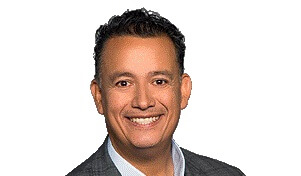PERSON OF THE WEEK: As mortgage lenders continue to seek out new business opportunities, reverse mortgage lending is emerging as one of the better lines of business, both in terms of the market opportunity of a rapidly-growing amount of age-eligible borrowers and on the positive impact reverse lending can have on the lender’s bottom line.
To learn more about how reverse mortgage lending is now a line of business that any lender can enter and why a purchase money market makes it more important than ever that lenders pursue this business now, MortgageOrb recently interviewed George Morales, reverse mortgage consultant and product manager for Mortgage Cadence.
Q: With the potential for reverse mortgage lending high, why did you choose to go to the technology side?
Morales: I’ve been working in the housing industry for nearly 25 years now, with the last 11 spent focused on originating the FHA’s Home Equity Conversion Mortgage (HECM) and proprietary reverse mortgages, known to all of us as simply the reverse mortgage.
When my parents got their reverse mortgage, it became personal for me. They wanted the peace of mind that would come with a stand-by line of credit and the flexibility that comes with not having a required monthly mortgage payment.
And then, in 2019, when my mother passed, having a mortgage payment was something we didn’t have to worry about. During one of the saddest and most stressful times a family can endure, the reverse mortgage played its part and eliminated the need to worry about housing for my grieving father and our family. As you can imagine, I’m a believer in this product.
If my housing industry experience has taught me anything, it’s that the technology reverse mortgage lenders are using today can be several years behind what is available to the forward lending side of the business. I saw an opportunity with Mortgage Cadence to continue to improve tech for originating reverse mortgages at a time when I think reverse lending is going to get much more important for both lenders and homeowners.
Q: Why do you think reverse lending is on the upswing?
Morales: There are a few reasons for this. First is demographics. Each day there are significantly more age-eligible homeowners who now qualify for reverse mortgages.
According to the U.S. Census Bureau, about 10,000 people each day are reaching the minimum age for an FHA HECM reverse, 62.5 years (55 is the minimum age for proprietary reverse mortgages). And, modern medicine along with better lifestyles among our aging population means we are living longer than ever. This is great, but it means homeowners will eventually turn to their home equity to finance their retirement. This is an opportunity to tap into a growing market of older homeowners who are looking for ways to access their home equity without having to sell their homes.
Secondly, it’s easier now than ever before for lenders to get into the reverse mortgage business. Reverse doesn’t have to be considered a completely separate line of business anymore because reverse mortgage loans can be originated on the same technology that forward lenders are already using.
Finally, lenders today want to find more products to offer, and they want to serve more borrowers to continue growing. Adding more products will help lenders deepen their relationships with existing customers and attract new borrowers who may not have considered the lender’s services before. This can lead to increased cross-selling opportunities and further revenue growth.
Q: But what about rising interest rates, won’t that impact reverse lending?
Morales: First, mortgage interest rates don’t have the same impact on existing reverse mortgage borrowers, because existing homeowners with a reverse don’t have a required monthly mortgage payment that would increase if rates went up.
The qualification process for taking out a Home Equity Conversion Mortgage (HECM) does depend, in part, upon the 10-year Constant Maturity Treasury (CMT). This index is part of the formula that allows the lender to determine HECM loan proceeds a homeowner can borrow. The higher the CMT, the less proceeds the borrower will qualify for, and the lower the CMT, the more proceeds will be available.
But the lack of a required monthly mortgage payment usually isn’t the only reason borrowers want a reverse mortgage. Borrowers seek out these loans because they make sense when incorporated into an overall retirement strategy.
Q: Why do you think these loans are so popular with older homeowners today?
Morales: As of the beginning of this year, older homeowners are sitting on $115 trillion of home equity. Over the past few years, they have come to understand that they can tap into home equity to fund retirement, create tax-free liquidity, and accomplish so much more. But there are many reasons these loans are becoming more popular, including:
- Additional funds to enjoy during retirement (especially if they don’t have enough in their retirement account)
- Continue living in their home instead of having to move to a retirement home (many want to Age in Place)
- Retire an existing mortgage loan along with the mandatory mortgage payment
- Gain access to tax-free money since equity isn’t considered income
Lenders who want to keep their pipelines full would do well to consider adding loan products that aren’t directly impacted by the interest rates consumers see on the evening news. Reverse Mortgages should be compared to other loan products including HELOCs for homeowners 55 years and older.











